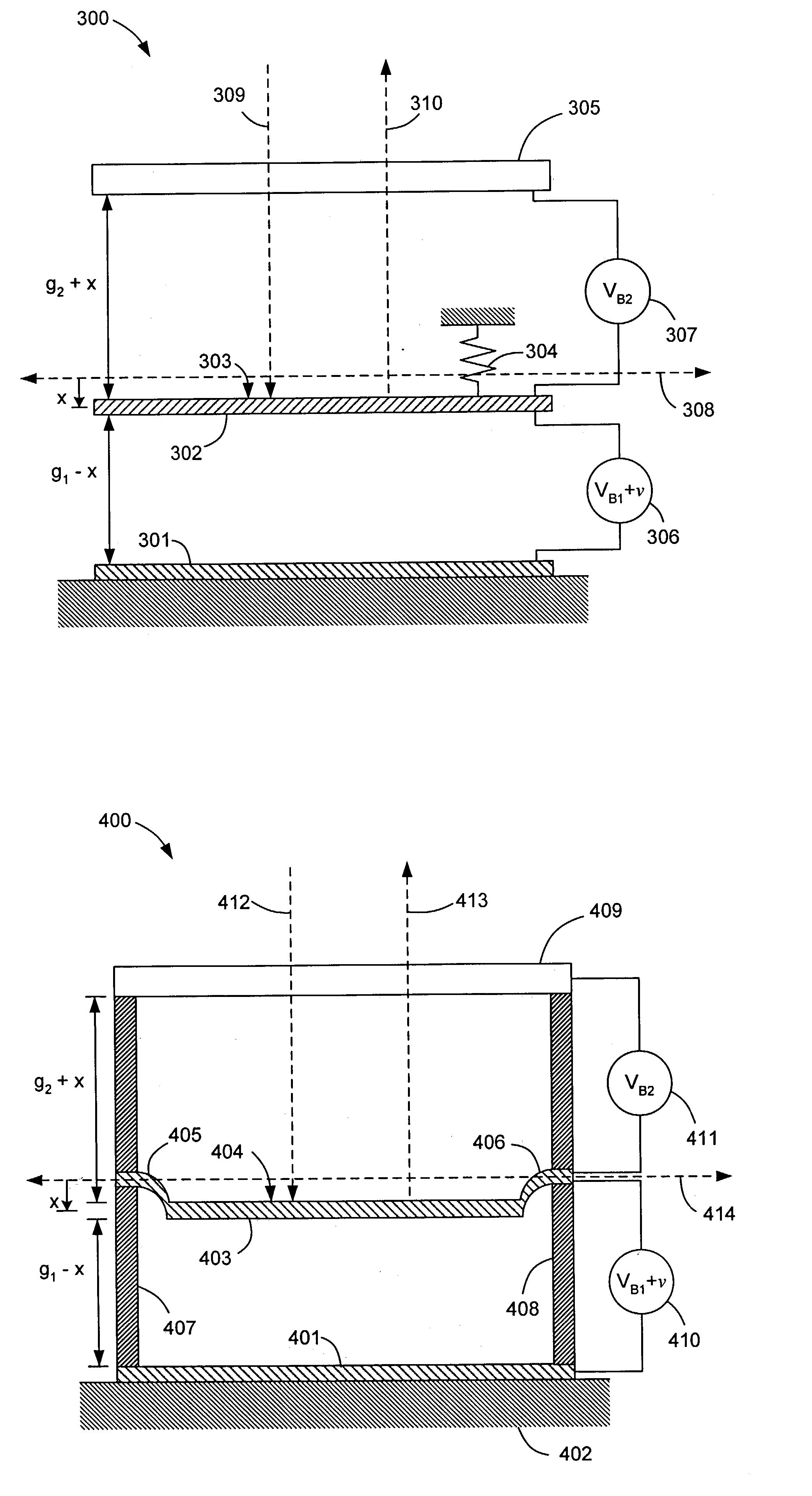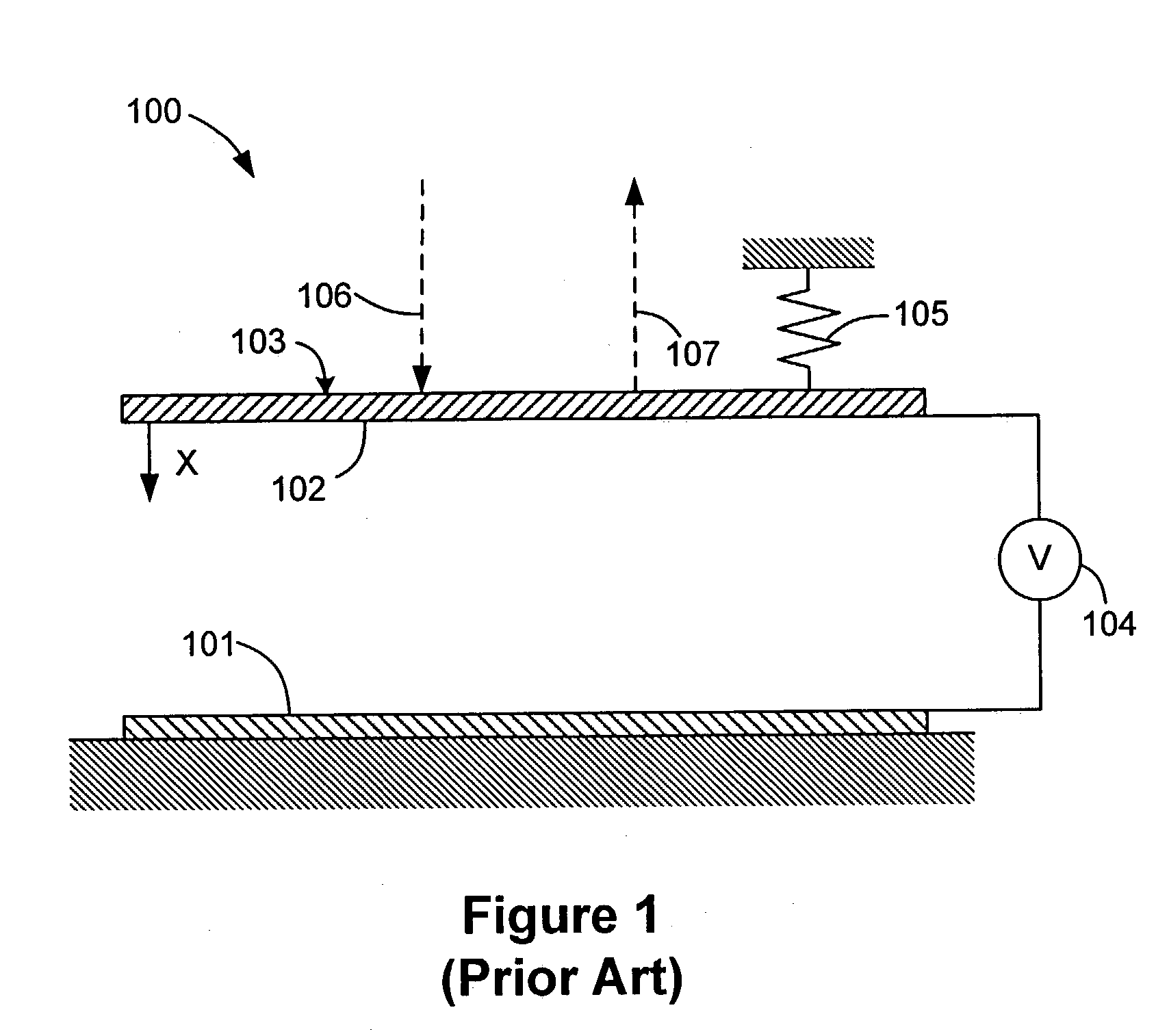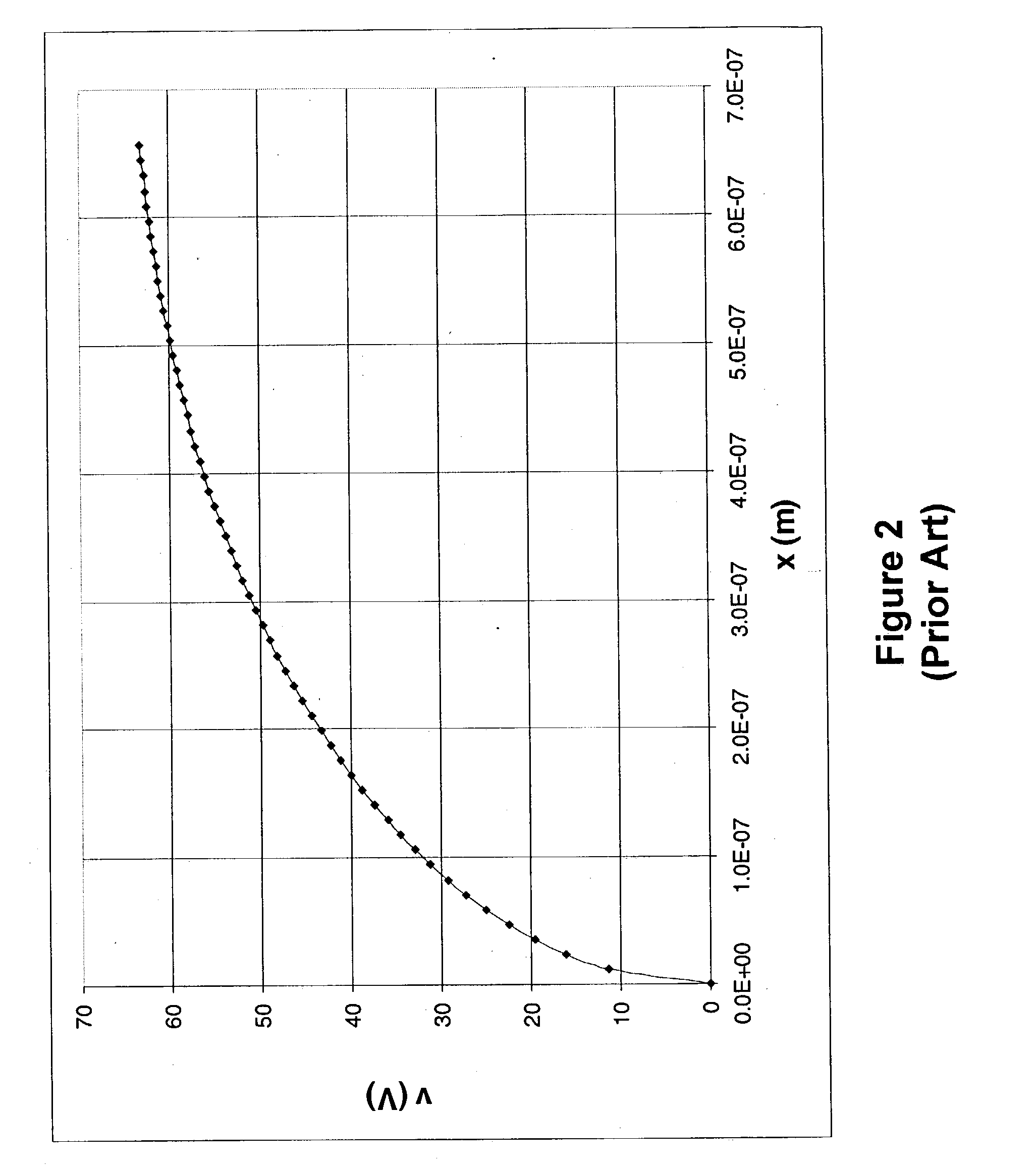Differentially-driven MEMS spatial light modulator
a spatial light modulator and differential driving technology, applied in the field of spatial light modulators, can solve the problems of large system size, difficult to integrate the required circuitry, and little or no room for other control electronics
- Summary
- Abstract
- Description
- Claims
- Application Information
AI Technical Summary
Problems solved by technology
Method used
Image
Examples
Embodiment Construction
[0022] A MEMS-based electrostatic actuator and actuation method, such as those designed for use in SLMs, is disclosed having three electrodes: a lower electrode, an upper electrode fixed with respect to the lower electrode, and a center electrode suspended between the lower and upper electrodes. A bias voltage is applied between the lower and center electrodes (lower / center pair), and also between the upper and center electrodes (upper / center pair), though not necessarily of the same magnitude. The center electrode is actuable between the lower and upper electrodes when a variable voltage is applied between one of the two electrode pairs. While not intended to be limiting, the driver voltage is preferably applied between the lower / center pair, primarily in order to allow positioning of driver electronics below and adjacent the lower electrode, as will be discussed herein. It is also notable that the fixed relationship between the upper and lower electrodes indicates that, at least d...
PUM
| Property | Measurement | Unit |
|---|---|---|
| voltage | aaaaa | aaaaa |
| drive voltage | aaaaa | aaaaa |
| sizes | aaaaa | aaaaa |
Abstract
Description
Claims
Application Information
 Login to View More
Login to View More - R&D
- Intellectual Property
- Life Sciences
- Materials
- Tech Scout
- Unparalleled Data Quality
- Higher Quality Content
- 60% Fewer Hallucinations
Browse by: Latest US Patents, China's latest patents, Technical Efficacy Thesaurus, Application Domain, Technology Topic, Popular Technical Reports.
© 2025 PatSnap. All rights reserved.Legal|Privacy policy|Modern Slavery Act Transparency Statement|Sitemap|About US| Contact US: help@patsnap.com



